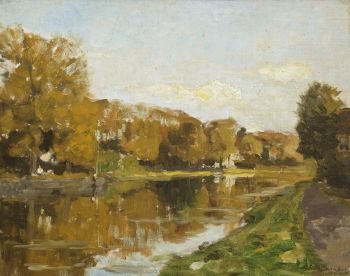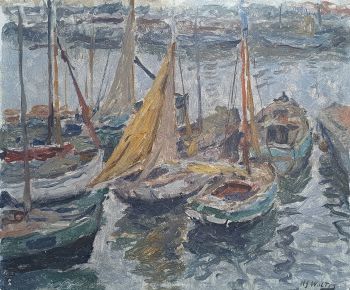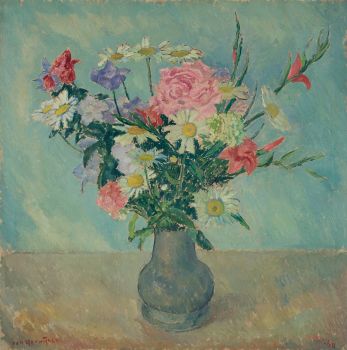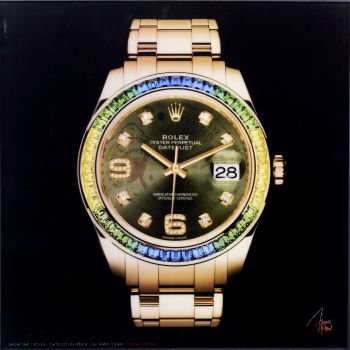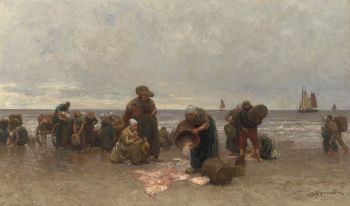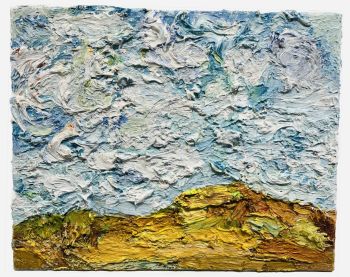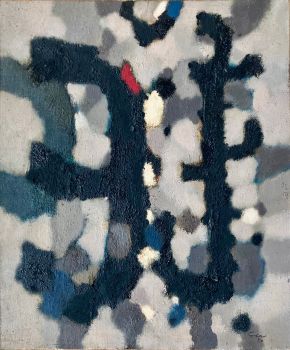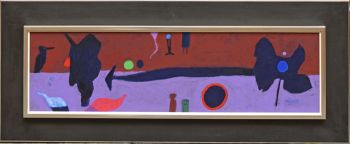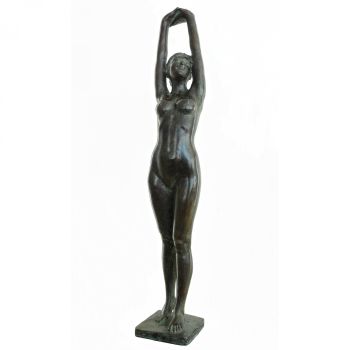GEZICHT OP KORTENHOEF 1862 - 1939
Egbert Rubertus Derk Schaap
Original oil on canvas
35 ⨯ 51 cm
Price on request
Galerie Het Noorderlicht
- About the artworkEgbert Rubertus Derk Schaap
"Gezicht op Kortenhoef"
EGBERT RUBERTUS DERK
Nigtevecht (Stichtse Vecht) 1862-1939 Ankeveen (Wijdemeren)
Olieverf op doek
35 x 51 cm.
Gesigneerd: rechts onder - About the artistThe painter E.R.D. Schaap grew up in the d'Oranjeboom house on the Vecht. During his time at the academy in Amsterdam he not only got to know his future wife Hendrika van der Pek, but also Breitner and the young Maks. Maks has seen Egbert Schaap as a teacher all his life. That seems a bit strange, because Schaap was not exactly a progressive painter by our standards. Until 1913 he paints and watercolors in a dark range of city and forest views.
Wide puddle views, often in large format, are also a favorite theme. He and his painting wife Hendrika have been living and working in villla Nova for about ten years now. The couple receives many guests from Amsterdam, including the well-known 'great' painters. Isaac Israels once painted a few girls in the grass. Sheep enjoyed prestige. After a quarrel in the St. Lucas painters' association between the modern 'blues' and the conservative 'browns', he was elected president of the 'brown' St. Lucas in 1913. Five years earlier he had made a name for himself with his booklet Romanticism in which he gave his vision on painting. Works of art were to be understood as the highest expression of the human spirit...' What one had to find in art was 'the materially incarnate Holy, (...) the expression of the desire of the ideal, of the belief in the superiority of fantasy over the actuality of the so-called truth… In his eyes, this reference to the higher was the essence of Romanticism, but also of all good art through the ages.
Schaap explicitly stated that he should not have anything to do with art that was born from the 'spirit of the times' or that arose from the needs of the art trade. Emphasizing the spiritual element in art – albeit quite late – fits in with the movement of Symbolism at the end of the nineteenth century, with the art of Toorop, Matthijs Maris and the 'artists of the Idea', as they were then known. named. After 1913, Schaap painted light landscapes in large numbers, with apple and pear trees in blossom. Although in our view these carefree paintings can hardly have a hidden symbolism, it was different at that time. At least titles like Spring Vision suggest that.
Are you interested in buying this artwork?
Artwork details
Related artworks
Egbert Rubertus Derk Schaap
LANDSCHAP AAN DE VECHT1862 - 1939
Price on requestGalerie Het Noorderlicht
1 - 4 / 4- 1 - 4 / 24
- 1 - 4 / 24
Albert Clouard
Élégante à la cape (Elegant lady with a cloak)1866 - 1900
Price on requestKunsthandel Pygmalion
1 - 4 / 24Egbert Rubertus Derk Schaap
LANDSCHAP AAN DE VECHT1862 - 1939
Price on requestGalerie Het Noorderlicht
1 - 4 / 24- 1 - 4 / 12




